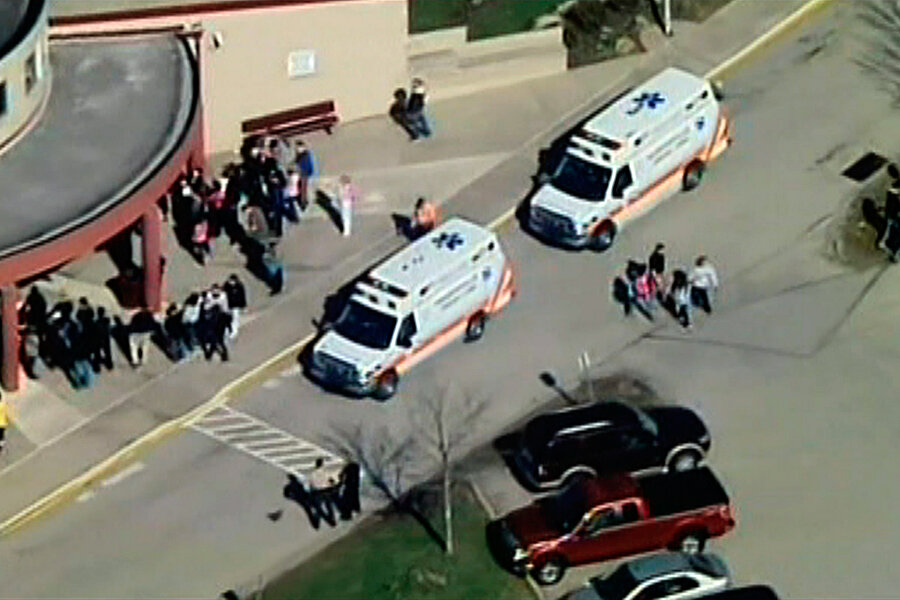Pennsylvania high school mass stabbing: stories of fear and heroism
Loading...
Stories of fear and heroism emerged as news broke about a mass stabbing at Franklin Regional High School in Murrysville, Pa., Wednesday morning. A 16-year-old student who reportedly had been armed with two knives was taken into custody, accused of stabbing and slashing students early in the morning before classes were under way.
Police and hospital officials say 19 students were wounded and one school security guard who was not stabbed was being treated for a medical condition. Several of the students were critically wounded and remained in surgery at a nearby hospital late Wednesday morning.
The school was locked down for investigation and the rest of the students were sent to a local elementary school to be reunited with their parents.
When Murrysville police arrived around 7:30 a.m. they found a chaotic scene. Stabbing victims were on a grassy area outside the building as well as in a first-floor hallway, where the full-time school resource officer had already detained the alleged stabber.
“It could have been a lot worse if there wasn’t immediate interaction” between a school administrator, the guard, the resource officer, and the stabber, said Murrysville Chief of Police Thomas Seefeld at a Wednesday morning press conference.
In reaction to the initial stabbings someone pulled a fire alarm, causing many students to exit the building. “You want students to run in a situation like this, and they did,” Chief Seefeld said.
Hospital officials credited one student with saving the life of a fellow student by applying pressure to a wound until emergency aid arrived, WTAE television news reported.
The incident highlights that when school buildings open in the morning, “school staff have to be ready to hit the ground running,” says Kenneth Trump, president of National School Safety and Security Services in Cleveland, Ohio. Many high-profile violent incidents at school occur in the early morning, when students are arriving, but “often, teachers are not required by contracts to come in until after many students are already in the building.”
Parents and former students told the Associated Press that the school does not have metal detectors but generally does a good job with school safety.
"I think the school reacted as fast ... as possible," Rich Nickel, whose daughter, Jenna, 16, is a sophomore, told the AP. "It's obviously a (lone) individual's act."
Homicides and violent attacks against students at schools are still relatively rare. Less than 2 percent of youth homicides occur at school, according to the Centers for Disease Control and Prevention.
In the 2010-2011 school year, 31 elementary- and secondary-school students died violent deaths in schools, and 14 out of every 1,000 15- to 18-year old students were victims of violence, according to the National Center for Education Statistics. In a student survey in 2010, 5.4 percent of students said they carried a weapon to school in the past 30 days.
School Superintendent Gennaro Piraino said the high school would be closed for several days but the elementary and middle schools would remain open and counseling services would be available for everyone in the community.
“We appreciate the thoughts, prayers, and support from our local community as well as from across the nation,” he said at a noon press conference.








